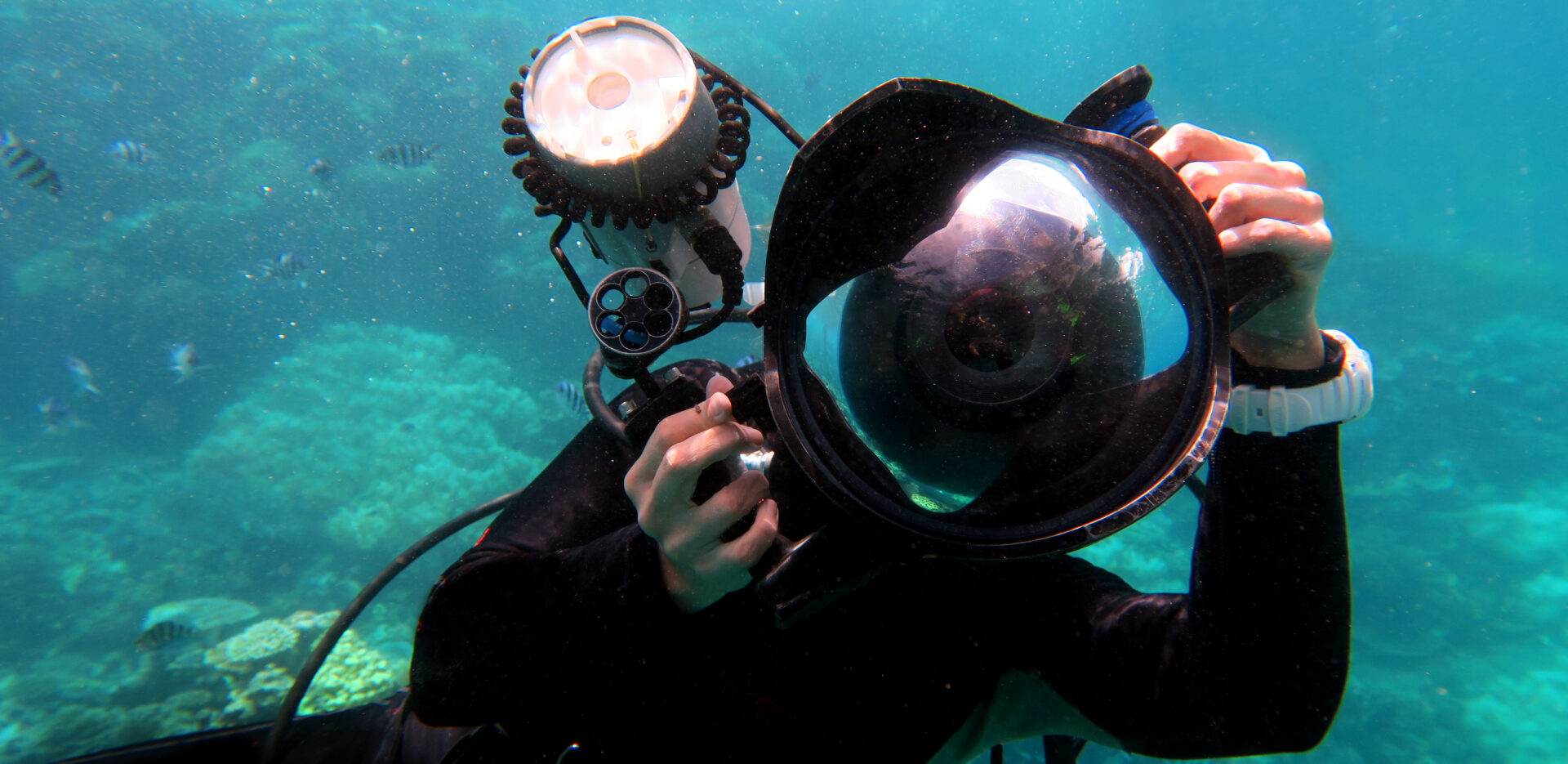Underwater photography the art of taking photos beneath the surface
Underwater photography is the practice of taking pictures beneath the surface of the water, often while scuba diving or snorkeling and sometime with the use of an unoccupied underwater drone. It’s a specialized field that combines the skills of photography with the challenges of the aquatic environment. Beyond its artistic appeal, it serves as a valuable tool for marine science, education, and conservation efforts.
Underwater photography involve taking images of shipwrecks, marine life, and other underwater objects. This job frequently requires a scuba diving certification, waterproof equipment, and specialized techniques to help get great photographs in areas with unusual lighting.
In order to capture underwater photos you need to be an experience swimmer, certificate scuba diver, or both. It recommended to take an instructed course in open water snorkeling and if underwater photography is your main interest take a certificated training in scuba diving.
To become an underwater photographer diver you will need first to be an accomplished diver get a good understanding of mastering buoyancy control, getting close to your subject, understanding the light and color behavior underwater, and using appropriate camera settings and lenses. Proper lighting, whether natural or artificial, is crucial for capturing vibrant colors, and post-processing with editing software can further enhance your images.
Many fascinating marine creatures can be found and photographed in shallow waters, typically at depths of 10 meters or less. This includes a wide variety of fish, invertebrates, and other marine life that thrive in coastal areas and reefs. Snorkeling and free-diving are great ways to explore these areas and capture images without the need for scuba gear.
The best time for shallow water underwater photography is at the middle of the day, with the sun at your back, aiming for a time between 10 am and 2 pm when the sun is strongest. This will provide the best light for capturing clear, well-lit images. Consider using a graduated neutral density filter to balance the exposure between the bright sky and darker underwater scene.
Before venturing out for a snorkeling or diving photography tour, it’s crucial to be well-prepared.
> Know your camera
Learn to operate our camera well, If you don’t know how your camera works on land, you won’t know how it works underwater. Adjust camera and strobes settings before you go for the shoot.
> Underwater Housing
For a serious scuba diver interested in underwater photography, acquiring a high-quality underwater housing for their camera is essential. This will protect the camera from water damage and allow for full functionality underwater, enabling the capture of stunning images.Before each dive, ensure your camera and housing are properly sealed and functioning correctly
> Camera settings
As a rule of thumb set your aperture to f5.6 – f/8 and the shutter speed to 1/250 or higher and adjust the ISO accordingly to prevent camera shaking from underwater currents and your body movements.
> Master buoyancy control
Remember to fine tune your buoyancy by using your breathing and aim to take your picture as you breathe out to prevent camera shake.
> Get close
Get close as much as you can to your subject but don’t get so close you damage the reef or irritated the marine life.
> Use a strobe
If you dive below 5 meters or planing to go in technical diving tour in a underwater cavern or inside a shipwreck, learn how to use a strobe effectively in underwater photography.
In deeper or darker conditions, a flash or strobe can help restore colors and reduce backscatter (tiny particles that create a hazy effect) and create a natural-looking light but try to avoid excessive of flash photography.
> White Balance
Water naturally filters out red light, resulting in cool, blue-toned images. Adjust your camera’s white balance settings to day light.
> Image format
Shoo in RAW format as it provides maximum flexibility for color correction and other adjustments in post-processing.
> Research
Studying marine biology sea life and sea creature behavior is crucial to get a great image of your subjects. Knowledge of an animal’s behavior, habitat, and typical movements allows photographers to anticipate and be in the right place at the right time to get compelling shots.
> Be Patient
Wait for the right moment to capture a great shot. observe the marine life without disturbing them and avoid chasing or harassing them as they more likely to let you get closer to them.
> Care for the environment
Never touch marine life. Avoid taking photos in rough conditions as this could lead to a reef damage. Photograph marine animals in their natural habitat, don’t relocate them.
> Be creative
Capture scenes where half the frame is above the water and the other half is below. Try manipulating camera angles, especially shooting from below as it can create dramatic and unique perspectives.Capturing subjects against a brightly lit background, creating a dark outline or silhouette. Try to shoot images in monochrome black and white settings.
> Be safe
To make your underwater photography trips safe and successful dive with a certificated local Dive Master who know well the diving site. While you are busy taking underwater photos, it is a good practice to be aware of any dangerous sea creatures at the location. If you are scuba diving always go underwater with a dive buddy and often check the oxygen supply gauge for the remaining air pressure in the scuba tank.
Underwater photography is a rewarding but can also be a dangerous demanding pursuit, requiring patience, technical skill, and a deep appreciation for the marine world. Be a responsible diver first and skillful artist second.

